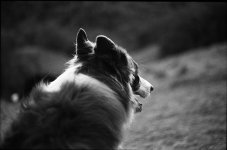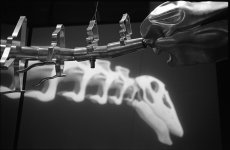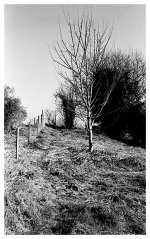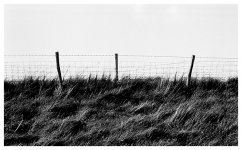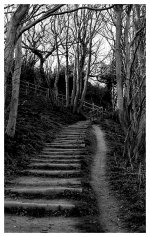Noserider
Christiaan Phleger
I went with Noserider cause I often surf a longboard, for the Noseriding. Still surf little boards tho' but only when the waves are better than average quality.
Yes, you are right, forcefull agit can and does increase contrast. However, and I won't get all technical on this point, smooth yet gentle agit (and perhaps even Less than you think) With This Film really helps tame that 'harsh' look. (Not to belittle that look, I find for some subjects and light that looks works really well).
The secret to this is doing a full, constant motion in everywhich way, yet gentle and even a bit slower, complete first minute. Yes, I know that everybody reccomends only 30 sec or whatever, With This Film, doing so prevents any uneven developing, which will show in skies etc. Then you do the light touch each min, I do 3 or even 2 light agits per min.
The analogy to this is cooking marshmallows over a fire. You can stick it in close, quickly, without turning it and setting it ablaze is distinct probablity. Or, get it hot by keeping it not too close, turning smoothly, makes for golden brown, perfect Smores. Yum.
Ok, food break over. The thing is, Neopan 400 is a great film, super flexible. It does have some unique characteristics, and my key point is that it works well in contrasty situations when you (another cooking analogy,sorry) drop it in to a already hot pan, and keep it moving at first, then lightly toss over a low heat every min.
I've done Neopan for years In everything, at multiple dilutions, including Rodinal, d-76/ID-11, Microdol-X/Perceptol, Xtol, and countless other formulas, published and homebrew, I can save you a lot of time in testing, and start smooth and complete, then go gentle.
Try it. Same light, 2 rolls. One do it your regular way, then do one This Way, maybe if you want to, give an extra 5-10% in time in case you like to meter more for the highlights, or you need more contrast in the shadows. The highlights might at first glance look too dense to print, but Print It, you'll find they'll print cleanly without much need for burning.
Good Luck, big Swell on the way, bouys are big.
Yes, you are right, forcefull agit can and does increase contrast. However, and I won't get all technical on this point, smooth yet gentle agit (and perhaps even Less than you think) With This Film really helps tame that 'harsh' look. (Not to belittle that look, I find for some subjects and light that looks works really well).
The secret to this is doing a full, constant motion in everywhich way, yet gentle and even a bit slower, complete first minute. Yes, I know that everybody reccomends only 30 sec or whatever, With This Film, doing so prevents any uneven developing, which will show in skies etc. Then you do the light touch each min, I do 3 or even 2 light agits per min.
The analogy to this is cooking marshmallows over a fire. You can stick it in close, quickly, without turning it and setting it ablaze is distinct probablity. Or, get it hot by keeping it not too close, turning smoothly, makes for golden brown, perfect Smores. Yum.
Ok, food break over. The thing is, Neopan 400 is a great film, super flexible. It does have some unique characteristics, and my key point is that it works well in contrasty situations when you (another cooking analogy,sorry) drop it in to a already hot pan, and keep it moving at first, then lightly toss over a low heat every min.
I've done Neopan for years In everything, at multiple dilutions, including Rodinal, d-76/ID-11, Microdol-X/Perceptol, Xtol, and countless other formulas, published and homebrew, I can save you a lot of time in testing, and start smooth and complete, then go gentle.
Try it. Same light, 2 rolls. One do it your regular way, then do one This Way, maybe if you want to, give an extra 5-10% in time in case you like to meter more for the highlights, or you need more contrast in the shadows. The highlights might at first glance look too dense to print, but Print It, you'll find they'll print cleanly without much need for burning.
Good Luck, big Swell on the way, bouys are big.
Last edited:





